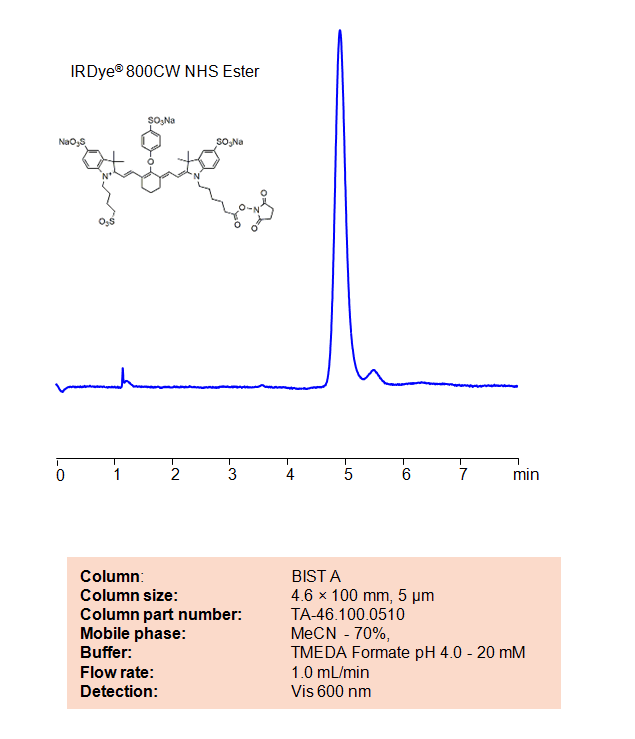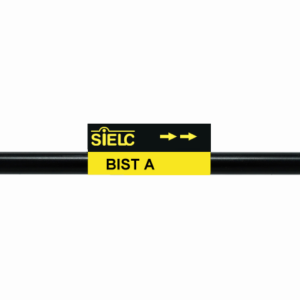Separation type: Bridge Ion Separation Technology, or BIST™ by SIELC Technologies
HPLC Method for Analysis of IRDye® 800CW NHS Ester on BIST A Column by SIELC Technologies

High Performance Liquid Chromatography (HPLC) Method for Analysis of IRDye® 800CW NHS Ester
IRDye® 800CW NHS Ester is an infrared dye used for labeling primary and secondary amine residues in proteins. Using SIELC’s newly introduced BIST™ method, this dye can be retained on a negatively-charged, cation-exchange BIST™ A+ column. There are two keys to this retention method: 1) a multi-charged, positive buffer, such as TMEDA formate, which acts as a bridge, linking the negatively charged dye to the negatively-charged column surface and 2) a mobile phase consisting mostly of organic solvent (such as MeCN) to minimize the formation of a solvation layer around the charged analytes. Using this new and unique analysis method, Tartrazine can be separated, retained, and detected at 600 nm.
Condition
| Column | BIST A, 4.6 x 100 mm, 5 µm, 100 A, dual ended |
| Mobile Phase | MeCN – 70% |
| Buffer | TMEDA Formate pH 4.0 – 20 mM |
| Flow Rate | 1.0 ml/min |
| Detection | Vis 600 nm |
Description
| Class of Compounds | Acid, Dye |
| Analyzing Compounds | IRDye® 800CW NHS Ester |
Application Column
BIST A
Column Diameter: 4.6 mm
Column Length: 100 mm
Particle Size: 5 µm
Pore Size: 100 A
Column options: dual ended





